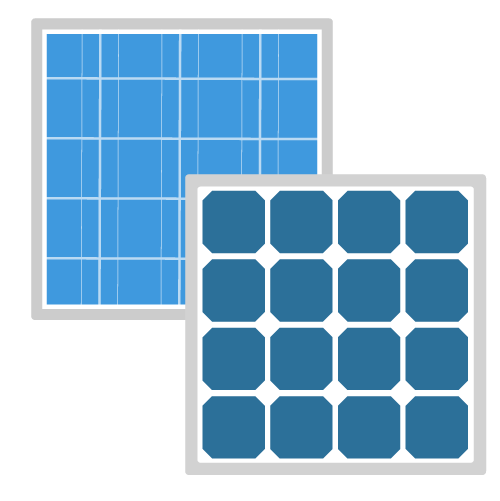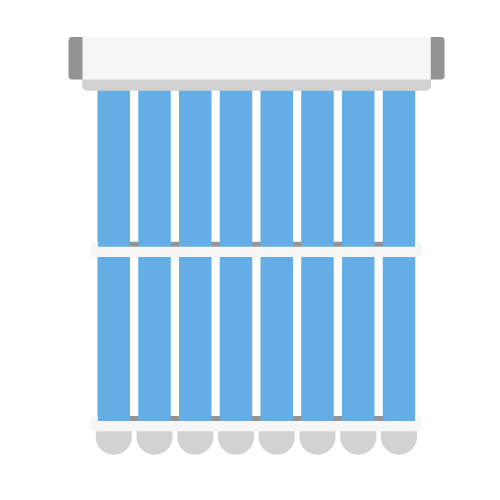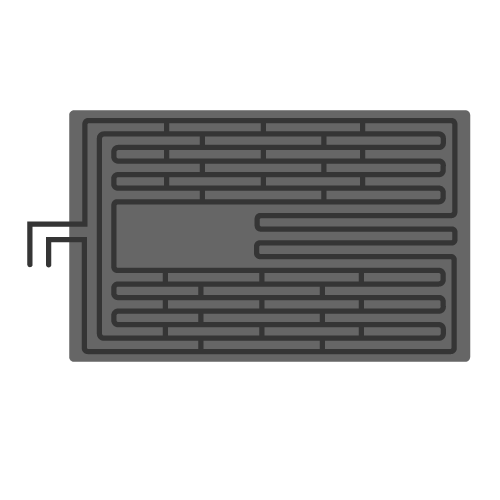You will be redirected to a Leads.io registration page.

Get up to 3 quotes from our selected suppliers by filling in only 1 form

Save money by comparing quotes and choosing the most competitive offer

Our service is 100% free and with no obligation
- GreenMatch.com
- Solar Energy
Solar Energy
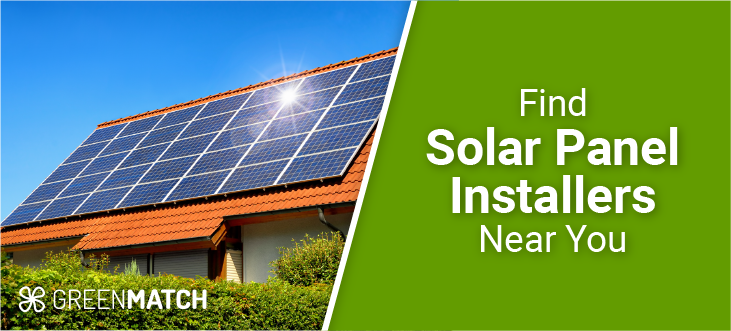
Did you know that you can generate green and cheap electricity from sunlight? Solar energy is one of the world’s best and largest natural resources. In this article, we will discuss everything from the benefits to the costs of solar energy.
Are you interested in utilising solar energy to power your own home? Then it’s a good idea to get in touch with multiple solar panel installers to see what your options are.
Our team at GreenMatch can connect you with up to 3 qualified installers from our network who are available in your area. This way, you don’t have to waste hours of your time researching and can easily choose the installer who offers the best value for money.
Click the button below to get your free no-obligation quotes now so that you can save money and reduce your carbon footprint.
Fill in the form in just 1 minute
How Can You Benefit From Solar Energy?
Solar power is said to be green since, in contrast to other sources of energy, it does not emit any pollutants into the atmosphere, whether it is produced or consumed. Nowadays, more and more people are switching to solar power not only because it is a green source of energy, but also because it is becoming less expensive and more efficient than it originally was. Thanks to technological developments we are now able to convert solar energy into heating or electricity.
Whether you are considering installing solar panels or a solar thermal collector in your own house or as a business, or if you are just interested in solar energy – here are a few things you need to learn.
Would You Like to Invest in Solar Energy?
If you’re interested in solar energy, but you’re still confused about all the details that need to be considered, we will gladly help you. Our service is simple and without any obligations!
Just fill in the non-binding form at the top, and you will be contacted by up to 3 professional installers with their offers, thus saving you tonnes of time of research. If you happen to like any of their offers, you are then free to choose the one you prefer. If you’d like to know some more about solar energy before filling out the form, just keep reading!
Benefits of Solar Energy
Check out our thorough guide about the pros and cons of solar energy.
How Does Solar Energy Work?
Solar energy is energy provided by the Sun. When converted into solar power, it can be used for heating or electricity by private households as well as businesses. Solar power is generated by a) a surface that collects solar energy and b) a method of converting the captured energy into electricity or heat. There are two main methods of converting solar energy into solar power:
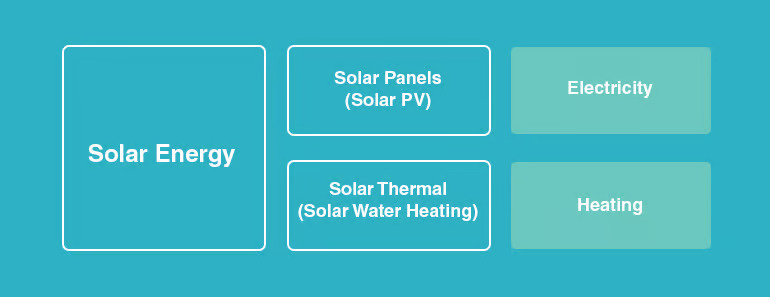
As previously mentioned, there are two main uses that can be given to solar energy regarding solar power. Depending on the method chosen to transform the energy, you can use it for electricity or for heating. In the first case, the method is called direct or photovoltaic (PV) conversion, and you need solar panels (solar PV). In the latter case, the method is called indirect or solar thermal conversion, where you use solar energy for heating.
Solar Energy for Electricity
Solar energy can be converted into electricity with the use of solar panels. This technique of harnessing solar energy works similarly to solar energy used for heating.
The light hitting the solar panel installed on the roof of the building is caught, converted, and used instantly.
You can choose whether you want to install a stand-alone PV system or a grid-connected PV system. The main difference is that a stand-alone system stores solar energy for your personal use. Grid-connected PV systems will send generated power to the public power grid, providing the possibility of selling your solar energy to anyone (i.e. neighbours).
How Do Solar Panels Work?
Solar cells or photovoltaic cells (PV) (comes from the Greek; photo meaning “light” and voltaic meaning “electricity”), convert sunlight directly into electricity. A solar panel is a group of cells connected electrically and grouped into a frame. Many solar panels put together will form a solar array.
PV cells are made of special materials called semiconductors (usually silicon). When light hits the solar cell, part of the energy absorbed and electrons from the atoms in the semiconductor material are released. When electrical conductors are attached to the positive and negative sides, thus forming an electrical circuit, the electrons can be captured in the form of electric current (electricity). This current, together with the cell’s voltage (which is a result of its built-in electric field or fields), defines the power (or wattage) that the solar cell can produce.
Solar Energy for Heating
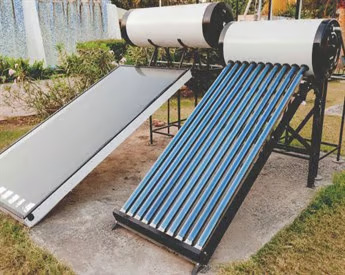
In this case, solar energy is converted to heated water which is then available for household purposes. In a solar water heating system or solar thermal collector system, the energy of the sun is attracted by collectors (either flat plate collectors or evacuated tubes) that are fitted on the rooftop of a household. Hot water is then transported through the tubes for household purposes. Typically, a solar water heating system would meet approximately a third of the hot water demand of a family of four.
Alternatively, thermodynamic panels can be used which are slightly pricier but can supply 90% or more of the water needs of a family. That is possible because thermodynamic heating systems use a different technology than solar thermal, as they are exploiting the heat from the ambient air rather than relying solely on solar energy.
This image reveals the two types of solar thermal systems: flat plate collectors and evacuated tubes.
Get Free Quotes on Solar Energy!
We are here to help you find your best deal! We know that finding the right supplier might take some research. You can make this process faster by simply clicking the button below and filling in our short contact form. You’ll receive up to 3 free, no-obligation quotes from our professional installers.
Fill in the form in just 1 minute
We strive to connect our customers with the right product and supplier. Would you like to be part of GreenMatch?


